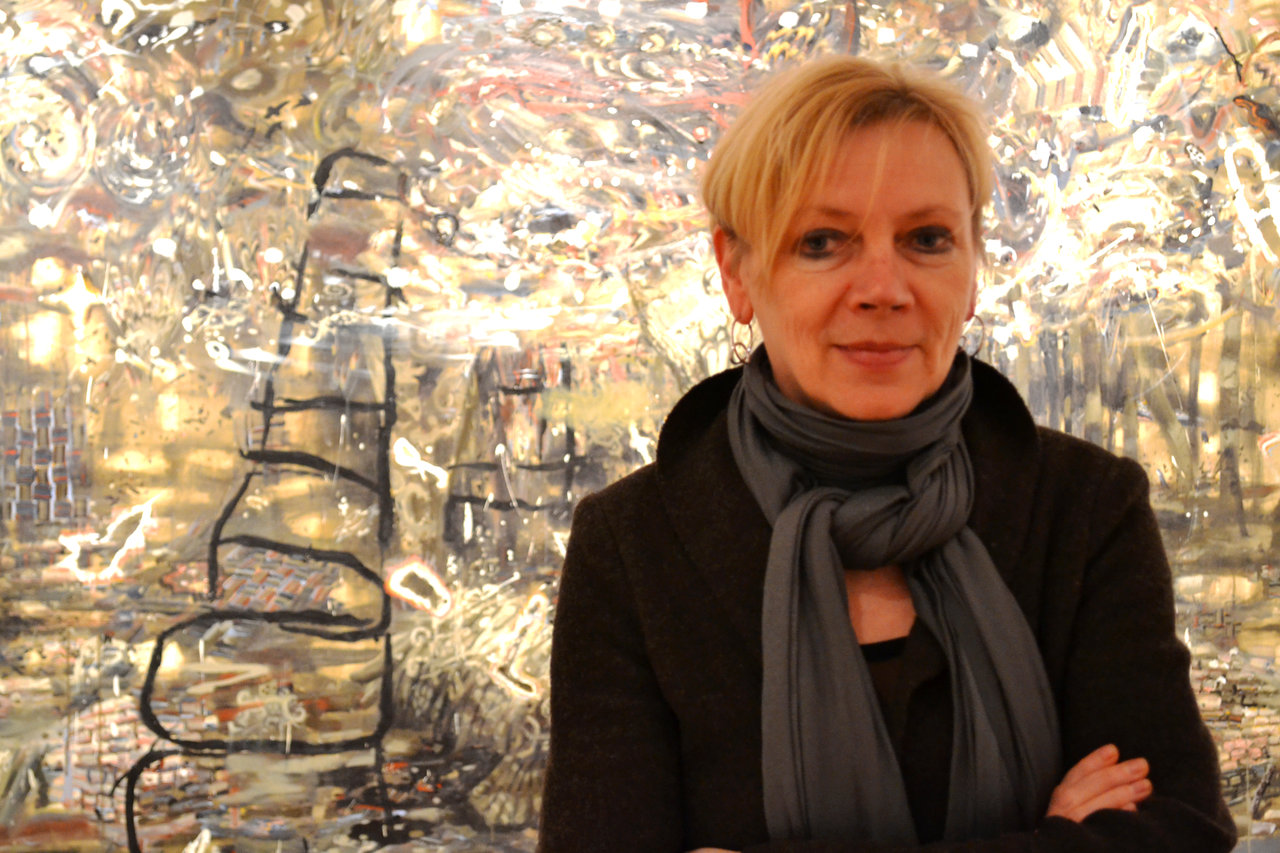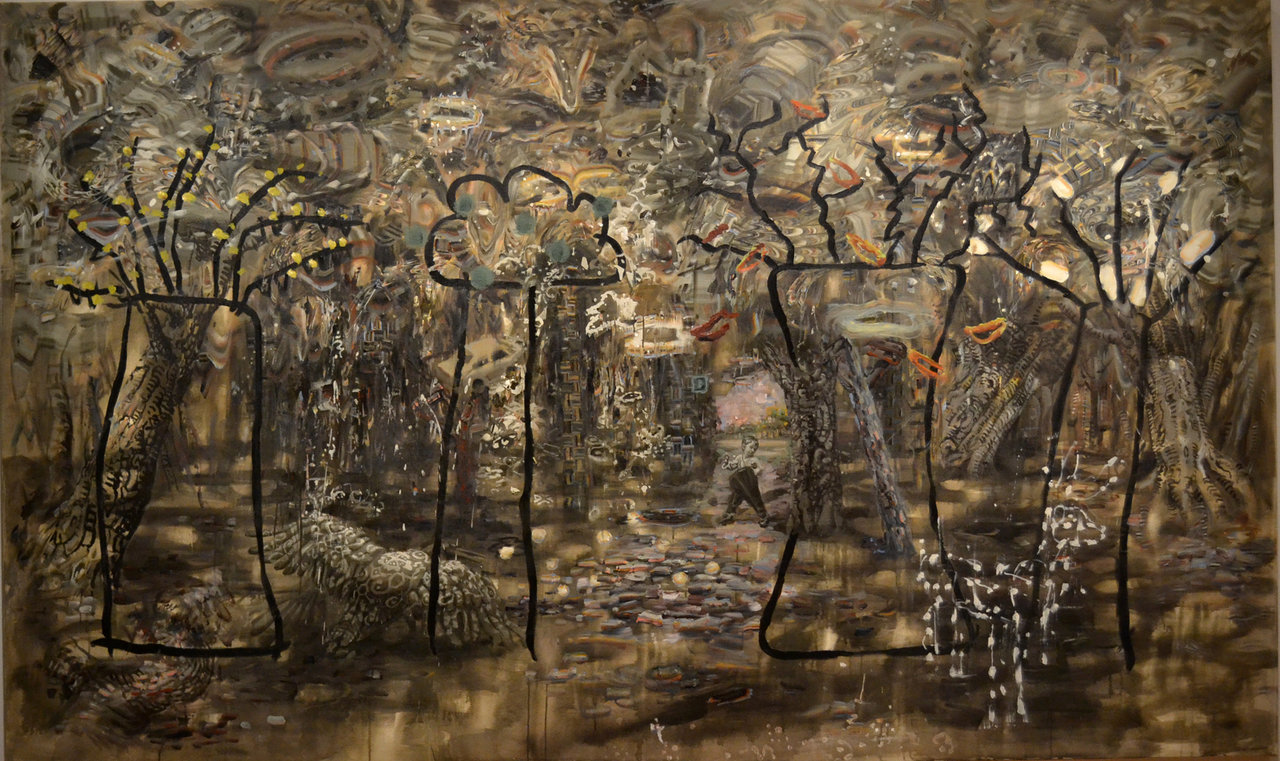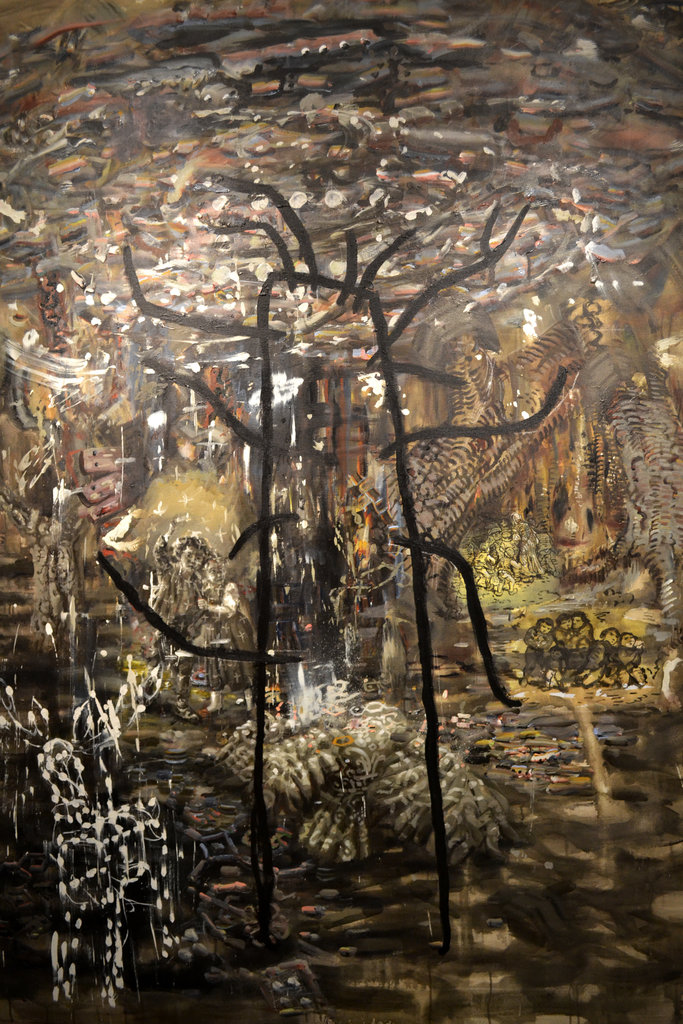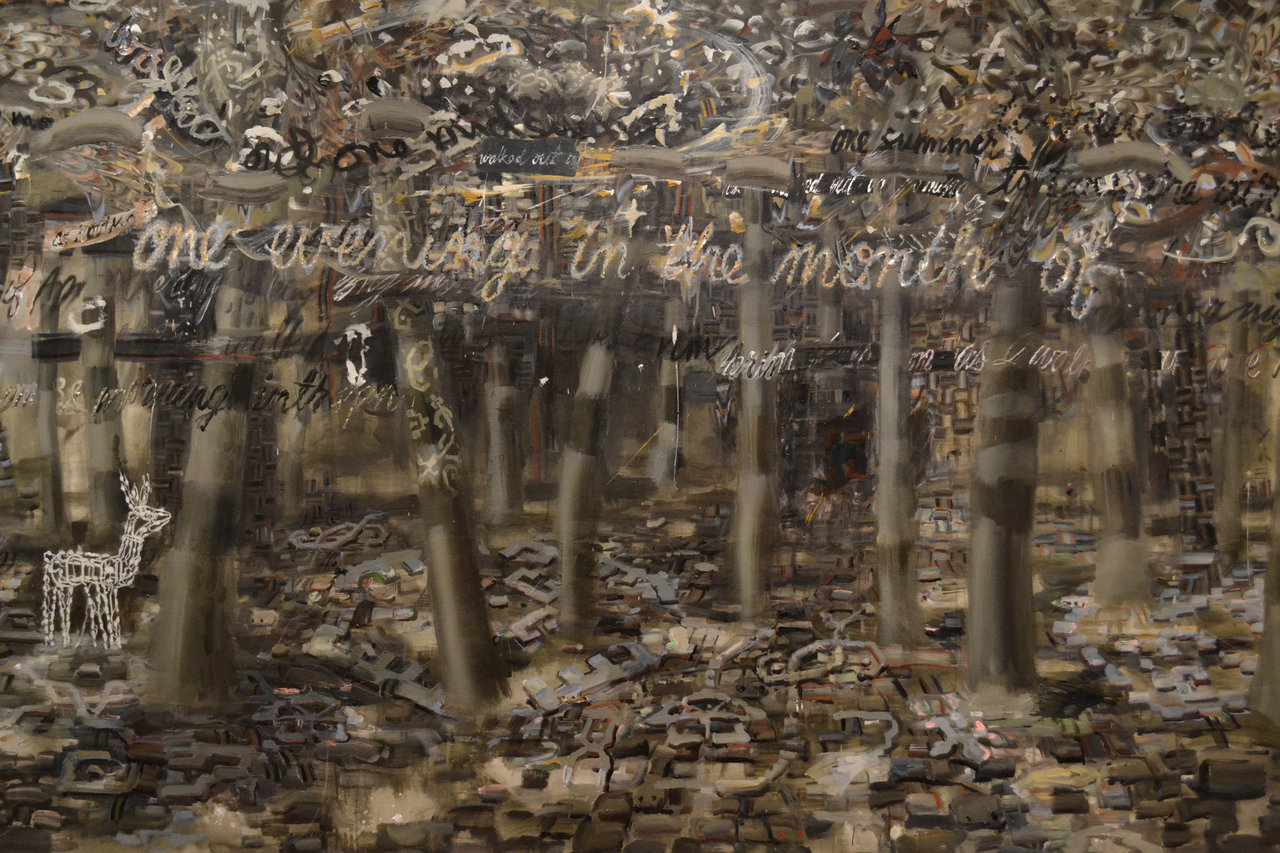 Carol Wainio in fron of her painting, Weather Events, at the Opening Reception on November 14, 2014
Carol Wainio in fron of her painting, Weather Events, at the Opening Reception on November 14, 2014
Dropped from the Calendar is a series of generally large-scale acrylic paintings where Carol Wainio successfully manages to combine several themes and motifs. First and foremost, the style itself is heavily inspired by 19th century works of literature, such as the fables by the Grimm Brothers, and literary criticisms from writers like Charles Baudelaire and namely Walter Benjamin. One of her many chosen quotes by Benjamin includes:
Where there is experience…certain contents of the individual past combine in the memory with material from the collective past”. “Rituals, with their ceremonies and their festivals…kept producing the amalgamation of these two elements of memory over and over again. They triggered recollection at certain times and remained available to memory throughout people’s lives.”
 Carol Wainio, Les Cailloux Blancs, 2014, acrylic on canvas, 72 x 120 inches
Carol Wainio, Les Cailloux Blancs, 2014, acrylic on canvas, 72 x 120 inches
Benjamin’s writings emerged during the Industrial Revolution, where the development of new technologies consequently hastened people’s lives, requiring an individual’s constant anticipation and awareness of their surroundings. The introduction of machines allowed for unyielding productivity and relentless manufacturing of newer and newer products, essentially desensitizing and “disenchanting” the individual. Those whimsical stories of old lost their emotional impact once modern society provided endless amounts of distractions.
 Carol Wainio, Lost, 2014, acrylic on canvas , 78 x 60 inches
Carol Wainio, Lost, 2014, acrylic on canvas , 78 x 60 inches
Fairy tales were among those most affected by the societal shift into the Industrial Age. Corporate entities and advertising agencies used iconic characters like Puss n’ Boots and Hansel and Gretel to appeal to the naiveté of younger audiences and to the nostalgia of the older generation. Ironically, stories that primarily emphasized scarcity through the humble and desperate lifestyle of the protagonist(s), like Hansel and Gretel, were now associated with excessive consumerism. As such, dynamic cultural shifts have occurred rapidly over the recent century, causing traditional human patterns to have a more outward impact, particularly towards the physical environment. This is why many of her paintings feature discarded trash and erupting oil derricks; with new behaviours comes a necessity for new generational responsibilities. Childishly-rendered representations of oil wells and the four seasons that are prominently featured in several of the paintings also demonstrate how recently-developed cultural attitudes revolving around excessive lifestyles become ingrained at a very early age, as would whimsical fairy-tales in earlier centuries.
 Carol, Wainio, One Evening, 2014, acrylic on canvas, 60 x 120 inches
Carol, Wainio, One Evening, 2014, acrylic on canvas, 60 x 120 inches
Wainio’s paintings are often incredibly large in physical size, as are the decrepit landscapes that she masterfully depicts. Her paintings are rich with imagery corresponding with 19th century traditions in both literature and art: the Victorian patterns often seen in the contemporary textiles and fashion now adorning the birds, the solid-lined crosshatched illustrations such as those found in the children’s books and cartoons, and the visual cues from the Grimm fairy-tales or other such literature. However, contrasting the lavishness of the earlier 19th century, the colors remain faded and muddy while the introduction of unfamiliar subject matter (i.e. cars, tires, etc.) as well as completely abstractive brushstrokes surround the only identifiable figures, thus eliciting a sense of deterioration of the landscape. In the work entitled One Evening in particular, she retains the decaying landscape but replaces the intricate Victorian patterns and depictions of children with traditional introductory phrases from the century, most emphatically “one evening in the month of…” that is clearly visible in the centre of the work. Though it is slightly different from the others, it still holds the same themes of developing cultural attitudes attributing to the human ecological impact. It is through the broad juxtaposition of the dystopian landscapes and the gentle innocent presence of children that allow Wainio’s pieces to convey such robust emotional connotations that is unique to her artistic style.
Text and photo: Simon Termine
*Exhibition information: November 14, 2014 – January 10, 2015, Paul Petro Contemporary Art, 980 Queen St West, Toronto. Gallery hours: Wed – Sat, 11 – 5 p.m.
